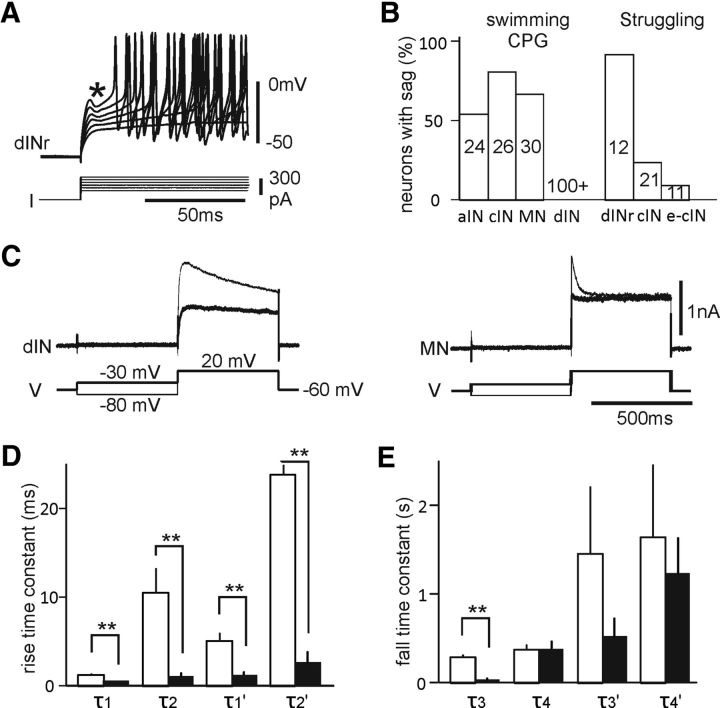Figure 1.
Delayed firing and K+ currents in neurons involved in swimming and struggling. A, Responses of a dINr to DC steps. *The sag before spiking increases with bigger DCs. B, Percentage of neurons with delayed firing. Numerals in bars indicate numbers of neurons examined. Struggling-specific neurons are active only in struggling and are identified in paired recordings (Li et al., 2007). Swimming CPG neurons are also active in struggling. C, Example K+ currents in a dIN and a MN. Inactivation voltage step is −30 mV before the final test step of 20 mV (thick lines). D, E, Comparing rise (D) and fall (E) time constants between dINs (unfilled bars) and non-dIN (solid bars). τ1–τ4 exponential constants measured in control (thin traces in C). τ1′–τ4′ are constants in tests with −30 mV inactivation steps. **Significance levels at p < 0.01.

